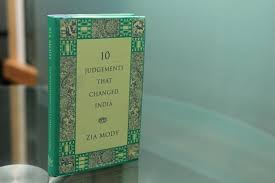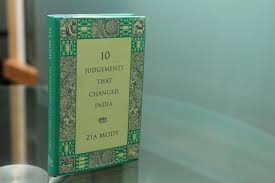
A history text book turned into a fiction would grab attention of any reader. Harris has done a great job in accounting the historical facts and creating a historical fiction – Imperium. Imperium is a book which captures the political and judiciary scenario which prevailed in the Ancient Rome.
IMPERIUM, the title of the book gives us a gist of the situation prevailing in Ancient Rome. Imperium implies OFFICIAL, POLITICAL POWER which is vested by the state in an individual. The greed, the need to achieve the POWER is shown through different characters. Imperium is the fictional biography of Cicero told through first person narrative, Tiro.
The main characters in the book include – Cicero, Tiro, Crassus, Lucius, Sergius Catilina, Verres, Pompey, and Hortensius. The protagonists of the book are Cicero and Tiro. The Antagonists are Verres and Catilina. The book is divided into two sections- Senator and Praetor.
Imperium takes a form of memoir. Tiro, a shy intelligent, bookish slave writes and narrates the story. He is also known to be the inventor of the shorthand writing or precisely saying a Stenographer. Tiro was assigned with the task of taking down his speech poetry, literary works and his letters. He was praised by everyone because of his flawless accuracy in capturing the narration of his master. On one occasion, he was invited into Pompey’s conference to take down the proceedings of the conference.
But this was not the limit of Tiro’s status ,for he was the slave and confidential secretary of the Roman statesman , the person who reveals himself to us in all his manifold contradictions, an author himself, an ambitious man with brilliancy attached to his crown, his blindness and his vulnerability, it is none other than our protagonist: MARCUS TULLIUS CICERO.
Cicero was a greater orator, a celebrated lawyer and a Roman statesman who had a high ambition of gaining the highest political power, that is, the consulship. The story which is narrated in the eyes of a confidante, Tiro has given a close exposure of the character of Cicero. He recounts Cicero’s ascent into the consulship, politics. He fought against all the insurmountable odds in order to reach his power. The best part of Cicero was that though Tiro was a slave, he was never treated indifferent from other members of the family.
Cicero, unlike the other aristocrats of his time, was a parvenu, who didn’t have a family tradition of imperium to rise to the power. His only strength and spell-bounding power was his oratory skills. It was the oratory skills that raised him to the consulship and this journey is what Harris has used as his narrative.
The interesting part for me is that the book concentrates and briefly explains the major events in Cicero’s life. It starts from the beginning of his training to become an orator. It starts with a brief explanation of his excursion to the East to learn philosophy and oratory from the famous Apollonius Molon in Rhodes and ends at him achieving his desire of becoming consulship.
The prosecution of Verres is described as major turning event. This is a case where Cicero uses his wit and strategy to achieve what he had in his mind. This event was when he had shortened his speech and directly dealt with the victims. This is the case where he shamed the senate body using his oratory skills. This is the case where evidences were given importance than long speeches which would go on for days together.
Though years have passed, his speech made during this case still has an eerie relevance in the present world – “A belief has become established – as harmful to the Republic as it is to yourselves- that these courts, with you senators as the jury, will never convict any man, however guilty, if he has sufficient money.” Not only these words, there are many such speeches, words of Cicero which Tiro has accounted which will engulf the readers mind with questions about its relevance to the present generation.
Cicero character also reflects a grey shade about his character- his insecurity. In the book, the reader might notice this when he once writes to his friend Atticus about how he anxiously wondered what people would be saying about him in a thousand years’ time.
My favourite character in this book was Tiro and Cicero. Tiro, because of the way he has given importance to the structure and beauty of each and every character and describing all the incidents which is of trivial matter. His memory and his writing skills must be appreciated. Cicero for his wit and the way he handles the situation is commendable. He has shown that an orator need not give boring speeches all the time. He has shown that sometimes a sense of sarcasm mixed with humour can grab attention at its best.
The strange relationships highlighted in the book, a reader can look out for are:
Cicero- Tiro, a relationship beyond a master and a slave.
Terentia – Cicero, a relationship of Husband and Wife with love filled with dominance.
Tullis- Cicero, A beautiful bond of Father and a daughter.
Pompey- Cicero, a relationship which looks like a friendship, but is built out of disdain and necessity.
Quintus-Cicero-Lucius, a relationship which celebrates brotherhood and a strong bond with three different characters.
The book has engrossed an idea of the Roman Republic. It also shows the dwindling of Roman Republic to the hands of Despotism. Thus the Roman Empire begins.
Robert Harris, a British Novelist, has captured the Roman republic at its best, including its Political system, Judiciary system, the need of power and its relevance in Today’s world. It’s a must read for all the Historical Fiction admirers. Imperium is also the first book of the trilogy which surrounds the life of Cicero. The sequel book is Lustrum.



